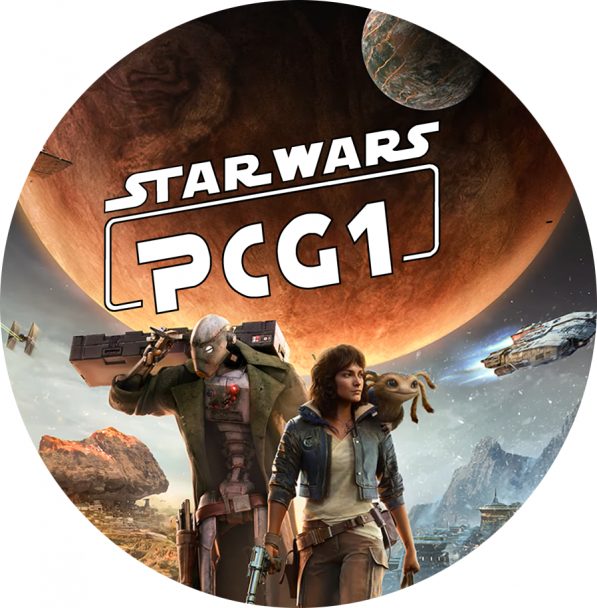Epic Games wrapped up its weekly Fortnite Summer Skirmish series on Monday, crowning one victor and giving out $1.5 million in prize money after a four-day series of high-stakes tournament play between the game’s most skilled players. The event, taking place at PAX West in Seattle, was the culmination of weeks of tinkering, experimentation, and a fair number of failures. The series is just the beginning of Epic’s $100 million e-sports commitment, but it may prove to be influential in helping the game developer realize its competitive ambitions.
Over the course of eight weeks, Epic tested new rules, tweaked its scoring format, and changed up the quality and diversity of the participants, all in an effort to find a winning formula. After two months, it finally found that formula, with the PAX final featuring a staggeringly impressive and eye-popping blend of skillful strategizing, serendipitous happenstance, and nail-biting bouts.
It was the highest caliber Fortnite play likely anyone in the world had seen up until that point, and it was a far cry from the unplayable first Summer Skirmish in mid-July, when server lag was so bad that participants couldn’t actively compete. The turnaround also proves just how viable Fortnite — with its immense skill ceiling and Epic’s ability to adjust how and to what extent players use certain strategies, in-game items, and maneuvers — may become as a proper e-sport.
/cdn.vox-cdn.com/uploads/chorus_asset/file/11540751/nstatt_180611_2668_0006.jpg)
/cdn.vox-cdn.com/uploads/chorus_asset/file/11540751/nstatt_180611_2668_0006.jpg)
Photo by Nick Statt / The Verge
The final involved a series of qualifiers over the weekend and one final seven-match contest on Monday. Epic, in its ongoing bid to democratize access to its competitive e-sports scene, let any PAX attendee show up and participate so long as they lined up first and put their name down. Of course, to progress to the final, you needed to perform well in the qualifiers, with the top 33 contestants from each day of qualifiers moving on to the final 99-person final.
Perhaps the biggest lesson learned over the course of the last eight weeks has been how to measure the performance of a Fortnite pro, so any contest can have a fairly decided winner. As a battle royale game, Fortnite comes with an inherent level of randomness: players don’t know who they’re going up against when they drop into a certain zone, what items they’ll have at their disposal, or how the circle will shrink over the course of the game. That means that luck will always be a factor in determining who wins a match, and multiple matches typically need to be played to prove a player’s overall performance and consistency.
In past Summer Skirmish events, Epic has let players drop into random lobbies and crowned a winner based on how many kills that person has. That led to a controversial second week when a console player known as iDroPz_BoDiEs bested the PC platform’s best Fortnite players and become embroiled in cheating accusations. (Epic later stood by the player, but it’s acknowledgement that console participants be able to use mouse and keyboard somewhat tarnished the company’s ongoing “Solo Showdown” competitions.)
In later tournaments, Epic tossed invited professionals onto the same private server, proving that the high-caliber competition was indeed more entertaining. But, as it became clear that pros looking to earn serious cash would operate far more conservatively than usual, Epic began encouraging a diverse play style by awarding points for kills and separate point values for finishes in the top 10 and victories.
Epic settled on a unique scoring system for the Summer Skirmish final, one informed by those previous tournaments and tweaked to incentivize a solid blend of conservative camping and aggressive combat. It was designed so that late-stage contenders weren’t immediately ruled out of winning it all if they were taken out early in one of the seven games, so long as they racked up enough kills — perhaps even won a game — and kept themselves on the leaderboard.
/cdn.vox-cdn.com/uploads/chorus_asset/file/11540761/nstatt_180611_2668_0012.jpg)
/cdn.vox-cdn.com/uploads/chorus_asset/file/11540761/nstatt_180611_2668_0012.jpg)
The winner of any given match received three points and an instant $25,000 check, while the second and third place finishers received two points. After that, finishing in the top 10 of any game awarded you one point. Finishing a game with three to four kills also earned you one point, with an additional point added for the five-to-six kill bracket and the seven-to-eight kill one. Winning a game with at least seven kills, which two players achieved in Monday’s final, earned you a staggering six points.
The end result was some of the best final circle fights Fortnite has ever seen, with dozens of players fighting in increasingly narrow and fraught situations on top of, next to, and below one another in cartoonishly absurd structures that you’d never see in a standard public match. In one match late in the tournament, players even found themselves soaring through the sky as an anti-gravity field — part of an ongoing in-game narrative revolving around a mystical purple cube — went seemingly haywire.
Epic had to add a seventh game to the series because of this, and it displayed the anti-gravity field in an emergency hotfix. But it proved one of the most entertaining surprises in the tournament and one only Fortnite, with its constantly updated map and increasingly mysterious sci-fi backstory, could have delivered. When the dust had settled, a relatively unknown player by the name of Morgausse had claimed the No. 1 spot and $250,000.
Yet perhaps the best moment of the event was when a Maurilio “Blind” Gramajo, a player signed to the e-sports team Cloud9, claimed the first six-point victory of the day, winning a match with nine kills. It turns out that, just four months ago, Blind was an aspiring Fortnite pro and college student who attended Tyler “Ninja” Blevins’ Las Vegas Fortnite tournament, the first major Fortnite e-sports event. There, he bested Ninja in the very first match of the day, won that game, and won the second game, too.
/cdn.vox-cdn.com/uploads/chorus_asset/file/12860741/949828776.jpg.jpg)
/cdn.vox-cdn.com/uploads/chorus_asset/file/12860741/949828776.jpg.jpg)
Talking to The Verge after the match back in April, Blind expressed disbelief at his performance and said he was hoping to get signed. Now, he’s a member of Cloud9, and he placed sixth in the overall Summer Skirmish standings for a $67,500 payout, in addition to the $25,000 he won from winning the second match of the day. It felt like the Fortnite e-sports community’s first overnight success story.
Epic’s big E3 Pro-Am tournament, which placed celebrities and streamers on teams of two in what was mostly a charity event designed for fun, became the first officially sanctioned Fortnite tournament back in June. While a watershed moment for the game, as NBA players and EDM DJs took the stage with e-sport pros, the event certainly showed how strained the battle royale genre can be in an e-sports setting. Without a proper replay system and an overwhelmed production crew frantically trying to catch all the best action, viewers had to deal with a dizzying number of switching camera angles and hard-to-parse commentary.
Epic has come a long way since then, employing fantastic casters like Ben Lupo and Jack Dunlop, both of whom now have sizable social media audiences themselves. In addition to those now-familiar faces and big names like Ninja, the Fortnite community has a growing roster of competitive players from around the world that viewers can follow and root for. The production value has significantly improved, with new replays, camera angles showing player heat signatures, and other subtle ways to more easily follow the fights. Epic has also finally figured out a solid way to let pros compete both in public servers and among themselves in heated private matches like the ones that took place at PAX by controlling point values and play styles.
The Summer Skirmish series doled out $8 million in prize money these past eight weeks, but there’s still $92 million more from Epic’s coffers waiting to be claimed and a Fortnite World Cup event scheduled for 2019. And so far, it looks like Epic has treated the competitive scene around its battle royale hit just as it’s treated its game development process: as an ongoing experiment that’s ever-changing and always improving.

